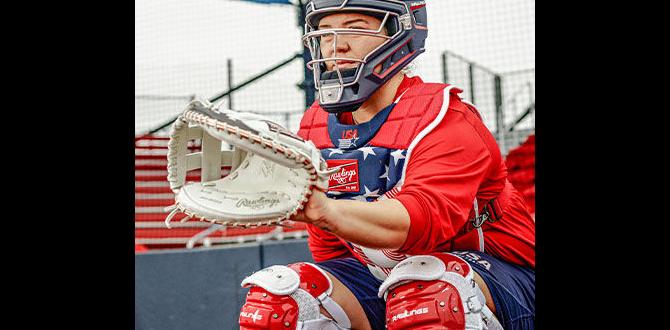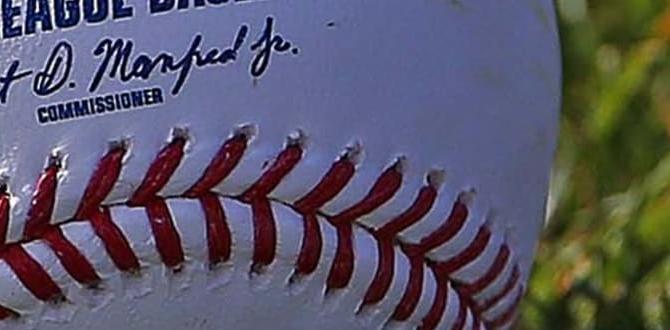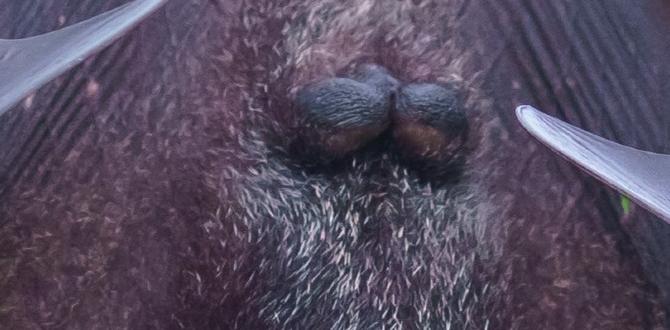Quick Summary: A high school catchers helmet is crucial for safety and performance. Choosing the right one involves understanding fit, protection levels, and modern helmet features. This guide helps you pick the best catcher’s helmet for durability, comfort, and optimal play.
Hey everyone, John P. Miller here from FriskMode! Stepping into the catcher’s box is a big deal. You’re the field general, the anchor behind home plate. But let’s be honest, staring down pitches at high school speeds can be intimidating, not just mentally but physically. One of the biggest concerns for any young catcher, or their parents, is protection. That’s especially true when it comes to the gear you wear, and there’s nothing more vital than a solid catcher’s helmet. Getting this piece of equipment wrong can lead to discomfort, distraction, or worse, injury. That’s why picking the right catchers helmet for high school is so important. We’re going to run through exactly what you need to know to make sure you’ve got the best protection and feel confident every time you step behind the plate.
Why Your Catcher’s Helmet Matters More Than You Think
Your catcher’s helmet is your most critical piece of protective equipment. It’s more than just a hat; it’s a carefully designed shield built to protect your head from errant pitches, foul tips, and collisions. For high school players, the speed of the game increases, and so does the potential for impact. A good helmet provides peace of mind, allowing you to focus on calling pitches, blocking balls, and making plays, rather than worrying about getting hurt.
Think about it: you’re positioned very close to the batter, a sliding runner, and the action is happening at a mile a minute. Foul balls can whip around with surprising speed, and even a well-thrown pitch can get away from the pitcher. The catcher’s helmet absorbs that impact, distributing the force and minimizing the risk of concussion or other head injuries. It’s an investment in your safety and your ability to perform at your best.
Understanding Catcher’s Helmet Types
When you start looking for a catchers helmet for high school, you’ll notice a few main styles. Each is designed with different priorities in mind, but they all aim to provide essential head protection.
Traditional “Hockey Style” Helmets
These are probably the most common type you’ll see at the high school level. They resemble a hockey helmet in shape and offer excellent all-around protection. The hard outer shell is designed to deflect and absorb impact, while the inner padding provides a comfortable, secure fit. The cage or mask is usually integrated, providing full facial protection.
Pros:
- Superior head and face protection.
- Great visibility with most designs.
- Durable and built to withstand impacts.
Cons:
- Can sometimes feel a bit warmer than other options.
- May feel bulkier to some players.
Shorter Mask/Helmet Combos
These are becoming more popular, especially for younger players or those who prefer a lighter feel. They typically consist of a sturdy, high-impact plastic helmet that covers the top and back of the head, paired with a separate, lighter-weight mask that covers the face. The helmet part is often open at the back, allowing for better ventilation.
Pros:
- Lighter weight, can feel more agile.
- Often provides better ventilation.
- Modular design means mask and helmet can sometimes be replaced independently.
Cons:
- Facial protection might feel slightly less robust than a full hockey-style mask for some.
- Requires ensuring both the helmet and mask components are securely attached.
Key Features to Look For in a High School Catcher’s Helmet
Beyond the basic style, several features can make a big difference in how well a helmet performs and how comfortable it is. When you’re looking for that perfect catchers helmet for high school, keep these in mind:
1. Fit and Sizing
This is arguably the MOST important factor. A helmet that doesn’t fit properly won’t offer optimal protection. It could slip, move around, or leave gaps where impact could occur. High school helmets are designed for adult head sizes, but there’s still a range. Always measure your head!
- How to Measure: Use a soft tape measure. Wrap it around the widest part of your head, about an inch above your eyebrows and ears.
- Check the Fit: The helmet should feel snug but not tight. You should be able to wear a cap underneath comfortably if desired. When you shake your head (gently!), the helmet should stay in place. The mask should be positioned correctly in front of your face, not too high or too low.
2. Protection and Safety Standards
High school baseball players need gear that meets recognized safety standards. Look for helmets that are certified by recognized organizations. For baseball, the ASTM F956 standard is a key indicator for hockey-style masks and helmets. This standard ensures the equipment has undergone rigorous testing for impact resistance and structural integrity.
Modern helmets often use advanced materials and designs to absorb and dissipate impact energy. Dual-density foam padding, reinforced shells, and strategically placed ventilation channels all contribute to both safety and comfort.
3. Cage Design and Visibility
The cage (or mask) protects your face. For high school level, a full cage is standard. Look for designs that offer clear, unobstructed vision. Wide field of view is crucial for tracking pitches, seeing runners, and making plays. Some cages use thicker bars for maximum protection, while others use engineered designs to maximize sightlines without compromising safety. Ensure the cage is securely bolted or integrated with the helmet.
4. Comfort and Ventilation
You’ll be wearing this for hours, sometimes in hot weather. Good ventilation is key to staying cool and comfortable, which helps you focus. Many helmets have strategically placed vents. Similarly, the padding inside should be comfortable and moisture-wicking. Removable and washable padding is a big plus for hygiene.
5. Durability and Material
High school ball is tough on gear. Your helmet needs to be made from durable materials that can withstand regular use and the occasional hard impact. ABS plastic or high-impact polycarbonate shells are common and effective. The cage material, usually steel or reinforced alloys, needs to be strong and resistant to bending.
Top Catcher’s Helmet Brands and Models for High School
There are several reputable brands that consistently produce high-quality catcher’s helmets. While specific models change year to year, these brands are known for their commitment to safety, performance, and innovation. Here are some you’ll frequently see:
| Brand | Key Features Often Found in High School Models | Notes |
|---|---|---|
| Easton | EGOP series, often lightweight, comfortable padding, good ventilation, strong cage design. | Known for innovative designs and focus on player comfort. |
| Wilson | Dynapocket, WTA series. Focus on a secure, comfortable fit, robust protection, and professional aesthetics. | A long-standing name in baseball, offering reliable gear. |
| Under Armour | Various helmet lines, often combining sleek design with advanced protection systems and comfortable fitting. | Tends to focus on modern aesthetics and performance-enhancing features. |
| Rawlings | Mach series, Velocity series. Often feature adjustable padding, durable construction, and excellent visibility. | A classic brand trusted by many players for decades. |
| All-Star | Pro-Series, CM-3000 series. Known for exceptional protection, often using advanced foam technologies and sturdy mask designs. | Specializes in catcher’s gear, making it a go-to for many serious catchers. |
When choosing, don’t just go by brand. Always prioritize fit for your head and the level of protection that feels right for you. Reading reviews and trying helmets on, if possible, is highly recommended.
How to Properly Fit and Adjust Your Helmet
Getting the fit right is critical for both safety and comfort. A poorly fitting helmet can shift during play, exposing you to unnecessary risks or becoming a distraction. Here’s a step-by-step guide:
- Measure Your Head: As mentioned before, use a flexible tape measure. Wrap it around your head about an inch above your ears and eyebrows. Note the measurement in inches or centimeters.
- Consult Sizing Charts: Every brand will have a sizing chart. Compare your head measurement to their recommendations. Don’t guess!
- Try it On (If Possible): If you can, try the helmet on. Place it on your head. It should feel snug all around.
- Check for Gaps: Look around the sides, front, and back. There shouldn’t be large gaps between your head and the padding.
- The “Shake Test”: With the chin strap securely fastened, shake your head gently side to side and up and down. The helmet should stay firmly in place without excessive movement.
- Adjust Straps: Most helmets have adjustable chin straps. Tighten them so the helmet feels secure but doesn’t pinch. The strap should rest comfortably under your chin.
- Mask Position: The cage should align with your face properly. The top of the cage should sit just above your eyebrows, and the bottom should extend below your chin. The bars should not obstruct your vision.
- Jaw Guard (If applicable): Some helmets come with an optional jaw guard that attaches to the cage for extra protection. Ensure this fits comfortably and doesn’t impede your ability to turn your head.
- Comfort Check: Wear it for a few minutes. Are there any pressure points? Does it feel too heavy? This is your chance to assess long-term wearability.
Remember, even with a great measurement, head shapes vary. What fits one person perfectly might not fit another. If you’re buying online, check the return policy to ensure you can exchange it if the fit isn’t right.
Maintenance and Care for Your Catcher’s Helmet
Taking care of your gear extends its life and ensures it continues to provide the best protection. Here’s how to keep your catchers helmet for high school in top shape:
- Cleaning the Shell: Wipe down the exterior with a damp cloth after games and practices to remove dirt and sweat. Mild soap and water can be used for tougher grime, but avoid harsh chemicals.
- Cleaning the Padding: Many helmets have removable padding. Take it out and wash it according to the manufacturer’s instructions – typically by hand with mild soap and cool water. Let it air dry completely; never put it in a machine dryer as heat can damage the material.
- Drying: Always let your helmet air dry thoroughly after cleaning or if it gets wet from sweat or rain. Store it in a cool, dry place away from direct sunlight, which can degrade plastic over time.
- Checking for Damage: Periodically inspect your helmet for cracks, dents, or any signs of structural compromise. Check the cage for bends or loose screws. If you notice any significant damage, it’s best to replace the helmet. The National Safety Council emphasizes the importance of well-maintained equipment for preventing injuries.
- Chin Strap: Ensure the chin strap is in good condition, not frayed or stretched.
Proper care not only keeps your helmet looking good but also ensures its protective qualities remain intact.
When to Replace Your Catcher’s Helmet
Gear doesn’t last forever, and your helmet is no exception. Replacement isn’t just about age; it’s about condition. Here are key indicators that it’s time for a new catchers helmet for high school:
- After a Major Impact: If you experience a significant blow directly to the helmet, even if there’s no visible damage, it’s best to replace it. The inner protective layers may have been compromised.
- Visible Cracks or Dents: Any cracks in the shell or significant dents are a clear sign of structural damage.
- Compromised Padding: If the padding is torn, flattened beyond recovery, or no longer fits snugly, it reduces the helmet’s ability to absorb impact.
- Loose or Damaged Cage: If the cage is bent, has loose fasteners, or no longer sits securely, it’s a safety issue.
- General Wear and Tear: Over several years of consistent use, materials can degrade. If the helmet feels loose, the straps are worn out, or the overall integrity seems compromised, it’s time to upgrade.
Think of your helmet as a piece of safety equipment with a limited lifespan. Prioritize your health and don’t risk playing with damaged gear.
Frequently Asked Questions About High School Catcher’s Helmets
Q1: What makes a catcher’s helmet different from a batting helmet?
A catcher’s helmet is designed for much higher impact forces. It includes a full cage or mask to protect the face and is built with more robust padding and shell construction than a standard batting helmet to withstand direct hits from pitches and foul tips.
Q2: How tight should a catcher’s helmet be?
It should be snug enough to stay put during quick head movements (like turning to throw) and vigorous play, but not so tight that it causes discomfort or headaches. The chin strap should be fastened securely but comfortably.
Q3: Can I use my old catcher’s helmet from Little League for high school?
Likely not. High school pitchers throw faster, and the balls are the same size but may hit with more force. Also, differences in head size and safety standards between youth and adult gear mean it’s usually best to get a helmet specifically designed for high school play.
Q4: How do I clean my catcher’s helmet?
Wipe the exterior with a damp cloth. Removable padding can usually be hand-washed with mild soap and water and then air-dried. Always check the manufacturer’s care instructions to avoid damaging the materials.
Q5: Is there a specific safety certification I should look for?
Yes, look for helmets that meet relevant safety standards, such as ASTM F956 for hockey-style catcher’s masks and helmets. This indicates the gear has been tested for impact performance.
Q6: How important is ventilation in a catcher’s helmet?
Very important, especially in warmer climates or during long games. Good ventilation helps prevent overheating, which can lead to fatigue and reduced concentration, impacting performance and safety.
Conclusion: Gear Up for Success Behind Home Plate
As a catcher, you’re the backbone of the team. Your catcher’s helmet is your first line of defense, and choosing the right one is a critical step in protecting yourself while you perform at your best. We’ve covered the essential types, the features that really matter — like fit, protection standards, and comfort — and how to keep your gear in top condition. Remember to measure your head, explore reputable brands, and always prioritize a secure, comfortable fit. Investing in a quality catchers helmet for high school isn’t just about following rules; it’s about ensuring you can focus on making great plays, developing your skills, and enjoying every moment on the field with confidence. Stay safe, play hard, and let’s make this a great season!




